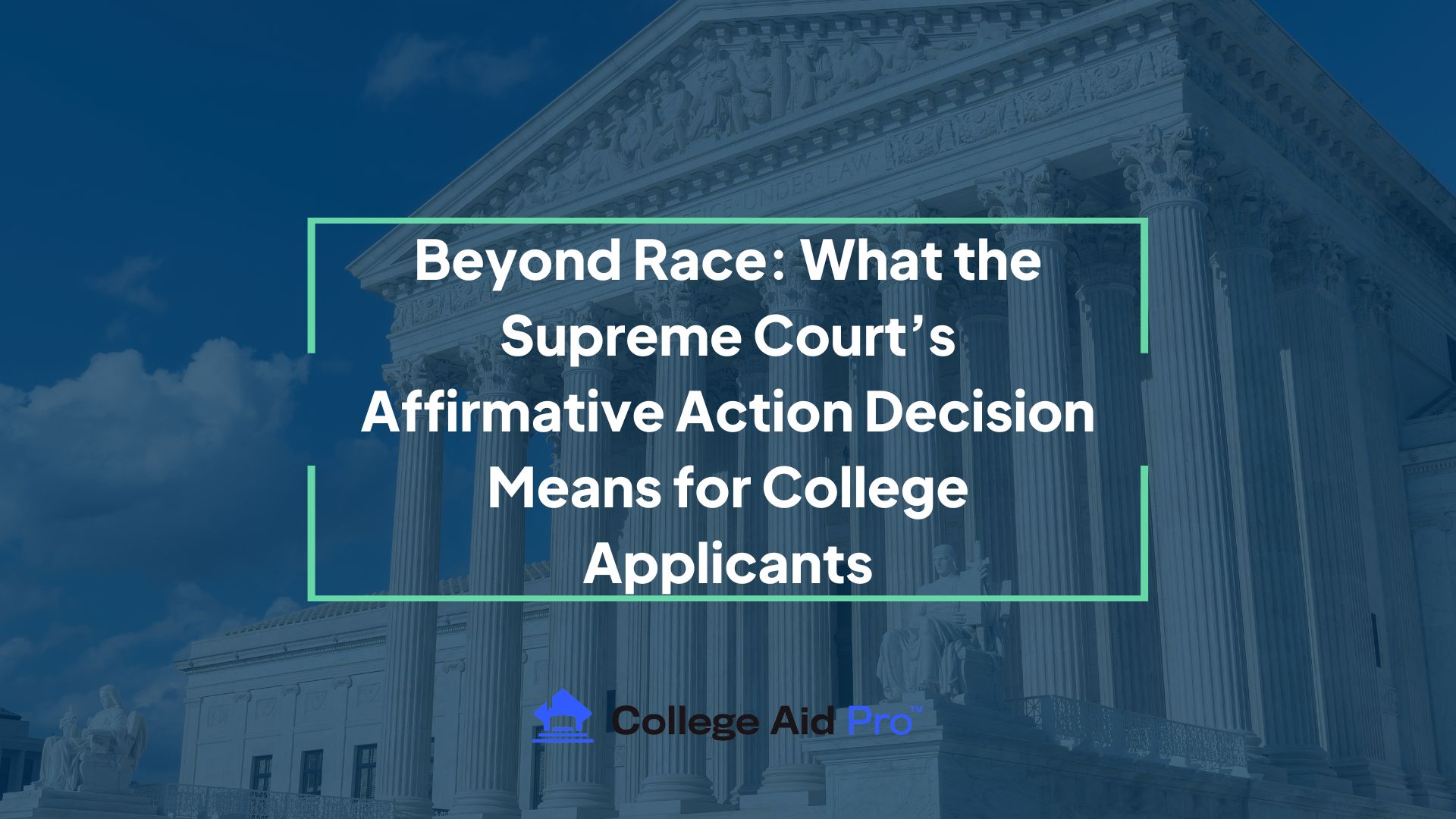The Supreme Court’s Decision on Affirmative Action and Its Impact on College Admissions
For those who have been following the news regarding the Supreme Court’s decision on affirmative action, you may be wondering what this means for you and if there is anything you need to know or do differently regarding this significant shift in college admissions practices. While this is still an evolving topic, here is what we know so far and some specific steps you can take to make the most of the qualities you bring to the table.
First, a little background…
Since its introduction in 1964, affirmative action has been a topic of debate and numerous court cases in the United States. Notable cases such as Regents of the University of California v. Bakke (1978), Grutter v. Bollinger (2003), and Fisher v. University of Texas at Austin (2013) have shaped affirmative action policies in higher education. However, on June 29, 2023, the Supreme Court made a significant ruling that has changed the landscape of college admissions and the use of affirmative action.
The Supreme Court’s Ruling
In its recent ruling, the Supreme Court declared that affirmative action is no longer an acceptable method for colleges and universities to maintain a balance of racial groups in their admissions policies. Additionally, institutions are prohibited from using essays and other application information to categorize applicants based on race. However, they are still allowed to consider a person’s life experiences and other factors that may involve race when evaluating if they possess the qualities the school is seeking in a student. Importantly, the decision must be based on the student’s personal character and individual life journey, rather than their race.
Changes in Admissions Policies
Following the Supreme Court’s ruling, colleges and universities across the country have been reviewing and revising their admissions policies and procedures. Most want to make sure that, following this ruling, they don’t see a decrease in diversity on their campuses. Some notable changes include:
- Removal of Race-Based Scholarships- States like Missouri and Wisconsin have taken steps to eliminate scholarships that were previously set aside based on race. This move aims to ensure a more equitable approach to financial aid distribution.
- Elimination of Legacy Admissions – Several schools, including Wesleyan, Johns Hopkins, MIT, Amherst, Carnegie Mellon, and Virginia Tech, have discontinued legacy admissions. Legacy admissions give preference to applicants who have family members who previously attended the institution, and studies have found that the majority who benefit from this practice are white, therefore, many schools are questioning if the practice has a place in their modern day admissions needs.
- Increased Essay Requirements – In response to the ruling, some schools, such as Stanford University, have increased their essay requirements. Stanford now requires students to submit nine additional essays as part of their application. This change allows applicants to showcase their personal character and life journey more comprehensively.
Guidance from the Federal Government
To provide clarity on the Supreme Court’s decision, the Departments of Education and Justice released a joint statement. According to the statement, schools can still target a diversity of races in their recruitment and retention efforts, as long as the admissions decision itself is not determined by race. Additionally, programs aimed at building a path for high school applicants of color, commonly known as “bridge” or “pathway” programs, are permitted. However, being of a certain race should not be a prerequisite for any segment of the accepted student roster.
The statement also clarifies that schools can continue to collect demographic data, including questions about race and ethnicity, as long as it does not influence the admissions decision. The Common App, a widely used application platform, has introduced a feature that allows institutions to hide demographic information from admissions officers.
Regarding university Diversity, Equity, and Inclusion offices, their legality was questioned after the ruling. However, the Federal Government has stated that such offices are permissible as long as they serve the entire student population without regard to race.
Future Guidance and Support
While some aspects of the Supreme Court’s ruling remain unclear, the federal government has promised to release guidance in September, providing recommendations on how to align policies with the decision.
So, What Does It Mean For You?
- Be prepared to spend ample time developing and writing essays for your college applications, as there may be many. Put your deadlines on a calendar and then create individual deadlines for getting essays done to make sure you aren’t trying to do everything at the last minute.
- If you are planning to apply for race based scholarships, check to make sure they are still available before you start working on your submission.
- Start thinking about your personal story and how your life has been impacted by all kinds of factors, including your race. How can you craft a genuine story that immerses the reader in your experience and doesn’t feel like you are talking about race just to talk about race.
- If you were hoping to attend your parent’s alma mater, make sure you add other schools to your school list that are also a good fit.
In the meantime, the experts at College Aid Pro will be monitoring the shifting landscape for you and working with our clients to make sure we do everything we can to ensure that they have every educational opportunity possible. And, as always, our team will continue to publish posts and provide free resources to help you stay on top of what you can do to optimize your prospects as a student.
The Supreme Court’s decision on affirmative action has brought significant changes to college admissions policies. While the practice is no longer an acceptable method for maintaining racial balance, schools can still consider a person’s life experiences and other factors that may involve race. As colleges and universities adapt to the new ruling, it is crucial for students to stay informed and seek guidance to ensure they aren’t missing out on valuable opportunities.



